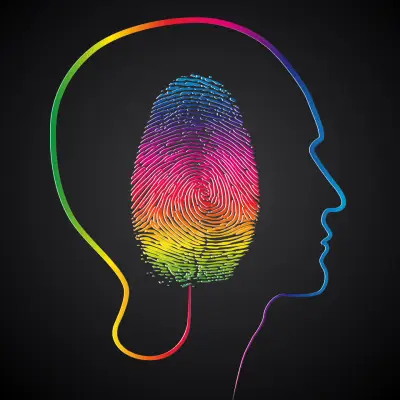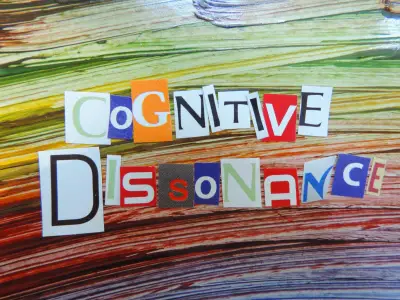The rational choice theory offers an interesting way to look at human behaviour, particularly about crime. Instead of seeing criminals as irrational and driven by uncontrollable urges, rational choice theory suggests that people make decisions based on a logical evaluation of the potential rewards and risks.
In this blog post, we explore how this theory works, why it’s relevant today, and some of its strengths and weaknesses.
Jump to:
- What is Rational Choice Theory in Criminology?
- The Main Principles of Rational Choice Theory
- Examples of Rational Choice Theory in Crime
- How can Rational Choice Theory be Applied to Crime Prevention?
- The Strengths of Rational Choice Theory
- Criticisms of Rational Choice Theory
- Frequently Asked Questions
- Study Our Criminology Diploma for £29
Recommended for you!
Best SellersWhat is Rational Choice Theory in Criminology?
Rational choice theory was primarily developed by economist Gary Becker in the 1960s. Although originally applied to economics, it was quickly adopted in other social sciences, including criminology and sociology. In criminology, scholars like Lawrence Cohen and Marcus Felson further developed the theory by focusing on crime and criminal behaviour.
Rational choice theory in criminology is the idea that criminals weigh the potential benefits of committing a crime against the risks involved. The theory assumes that criminals act in their own self-interest, making choices they believe will maximise their gain and minimise their loss.
The Main Principles of Rational Choice Theory

To understand rational choice theory fully, it's important to explore its key principles:
1. Rational Decision-Making
The central idea behind rational choice theory is that people make decisions based on a rational analysis of costs and benefits. In the case of a crime, this means weighing the possible rewards (like money, power, and satisfaction) against the potential costs (such as getting caught, punishment, or harm to others).
2. Free Will and Self-Interest
Rational choice theory assumes that people have free will and the ability to make choices. People are seen as rational actors who make decisions to benefit themselves, whether those benefits are financial, emotional, or social.
3. Opportunity and Circumstance
For rational choice theorists, opportunity plays a key role in criminal behaviour. If the opportunity for a crime is present, and the person believes the potential rewards outweigh the risks, they may choose to commit the crime. Factors like location, ease of access, and time all influence this decision-making process.
Examples of Rational Choice Theory in Crime

To make the concept clearer, here are some examples of how rational choice theory might explain criminal behaviour:
- Burglary: A burglar may decide to break into a house after assessing that the house is empty, the valuables inside are easy to steal, and the likelihood of being caught is low. The burglar’s decision is based on the belief that the reward (e.g., money, electronics) is greater than the risk of getting caught.
- Fraud: A person might commit fraud by lying about their income to get a loan, believing that the chances of being caught are slim and that the financial gain from the loan is worth the risk.
- Drug Dealing: A drug dealer may weigh the potential profit of selling illegal substances against the risks of arrest and violence. If the profits seem high enough and the risks manageable, they may choose to engage in illegal activity.
In each of these examples, the criminal is making a rational decision based on their understanding of the costs and rewards involved.
How can Rational Choice Theory be applied to crime prevention?
Rational choice theory can be applied to crime prevention by manipulating the cost-benefit analysis that individuals make before committing a crime. This can be done in several ways:
- Increasing Risks: Improving surveillance, increasing police presence, and enforcing stricter penalties can raise the perceived risks of committing a crime, making it less attractive.
- Reducing Opportunities: Modifying the environment (e.g., better street lighting, secure buildings, and reducing access to valuable targets) can reduce the opportunities for crime, making it harder for criminals to act.
- Deterring Crime: Creating a system that makes it easier for criminals to be caught (through technology or community vigilance) can act as a deterrent.
The Strengths of Rational Choice Theory

Rational choice theory is appealing for several reasons, especially when it comes to explaining criminal behaviour in a structured, logical way:
Clear and Understandable
Rational choice theory offers a straightforward approach to understanding crime, suggesting that criminals act out of self-interest and make choices based on perceived rewards and risks.
Focus on Decision-Making
The theory emphasises the role of decision-making in crime, which can be helpful for law enforcement and policymakers looking to prevent criminal activity. If people are making decisions based on their assessment of risks and rewards, altering these perceptions through policy or environmental changes can help reduce crime.
Application to Policy and Prevention
Rational choice theory has been used to inform crime prevention strategies, particularly in areas like situational crime prevention. For example, increasing the perceived risks of crime (through increased surveillance or harsher penalties) or reducing opportunities (by altering the environment) can make crimes less attractive to potential offenders.
Criticisms of Rational Choice Theory

While rational choice theory offers a useful framework for understanding criminal behaviour, it has its critics:
Overemphasis on Rationality
One of the main critiques is that the theory assumes that all crime is a rational decision. However, many crimes are committed impulsively or due to factors such as addiction, mental illness, and peer pressure, which the theory doesn’t fully address.
Lack of Focus on Social Factors
Rational choice theory tends to overlook the broader social, economic, and psychological factors that influence criminal behaviour. It doesn’t account for poverty, lack of education, social inequality, or childhood trauma; factors that can play a significant role in a person’s likelihood of committing a crime.
Assumes Perfect Information
The theory assumes that criminals have perfect knowledge of the risks and rewards involved in their actions. In reality, people often make decisions based on incomplete or faulty information, which can influence the outcome.
Neglects Emotional and Psychological Factors
The theory focuses purely on rational decision-making, but many crimes are driven by emotional impulses or psychological issues. For instance, crimes of passion, such as domestic violence or murder, often don’t align with the rational decision-making model.
Recommended for you!
Best SellersFrequently Asked Questions
Is crime always rational according to rational choice theory?
Rational choice theory assumes that crime is generally a rational decision made by people who weigh the potential benefits and risks. However, the theory is criticised for not accounting for crimes that are impulsive, emotional, or driven by psychological factors, such as crimes of passion, addiction, and mental illness. In these cases, the decision to commit a crime might not follow the rational decision-making model outlined by the theory.
What is the difference between rational choice theory and routine activities theory?
While both theories focus on crime as a result of decision-making, routine activities theory emphasises the role of opportunities in crime, suggesting that crime occurs when a motivated offender encounters a suitable target without capable guardianship. In contrast, rational choice theory focuses more on the individual decision-making process, where a criminal evaluates the risks and rewards of committing a crime. Essentially, routine activities theory focuses more on the circumstances that make crime possible, while rational choice theory focuses on someone’s cost-benefit analysis.
How can rational choice theory help policymakers?
Rational choice theory helps policymakers by providing a framework to understand criminal decision-making. By recognising that people act based on perceived rewards and risks, policies can be developed to increase the risks of crime or reduce the opportunities for it. For example, law enforcement can focus on increasing the certainty of punishment, or urban planners can design environments that minimise opportunities for crime.
Is rational choice theory still relevant today?
Rational choice theory remains relevant today, especially in understanding crime from a practical perspective. It has been applied in various crime prevention strategies, such as situational crime prevention and the design of public spaces. However, its limitations have prompted further developments and refinements, integrating insights from psychology, sociology, and criminology to provide a more comprehensive understanding of criminal behaviour.
Is rational choice theory applicable in both developed and developing countries?
Rational choice theory can be applied in both developed and developing countries. In both contexts, people make decisions based on the perceived rewards and risks of their actions. However, the social and economic environment can influence the way these decisions are made. For example, in developing countries, the lack of economic opportunities might increase the perceived benefits of committing a crime, while in developed countries, factors such as law enforcement and surveillance might increase the perceived risks.
Can rational choice theory be applied to juvenile delinquency?
Rational choice theory can be applied to understanding juvenile delinquency, but it needs to be adapted for younger people. Juvenile delinquents may commit crimes after weighing the potential benefits (e.g., peer approval, thrill, or financial gain) against the risks (e.g., getting caught, punishment, or parental disappointment). However, factors such as lack of maturity, peer pressure, and limited life experience can influence decision-making in ways that differ from adult offenders.
How does rational choice theory apply to cybercrime?
Rational choice theory can be applied to cybercrime by examining the decision-making process of cybercriminals. Offenders may decide to engage in online crimes such as hacking, identity theft, or online fraud because they perceive the potential rewards (e.g., financial gain, anonymity, or minimal risk of detection) as outweighing the risks (e.g., getting caught or facing legal consequences). The perceived lack of immediate physical danger and the anonymity provided by the internet may make cybercrime more attractive to potential offenders.
Study our Criminology Diploma for £29
If you’re interested in exploring criminology further, consider enrolling in the Criminology Diploma Course at Centre of Excellence. With a special discount, you can access the course for just £29 and gain a deeper understanding of criminological theories, criminal behaviour, and more.












